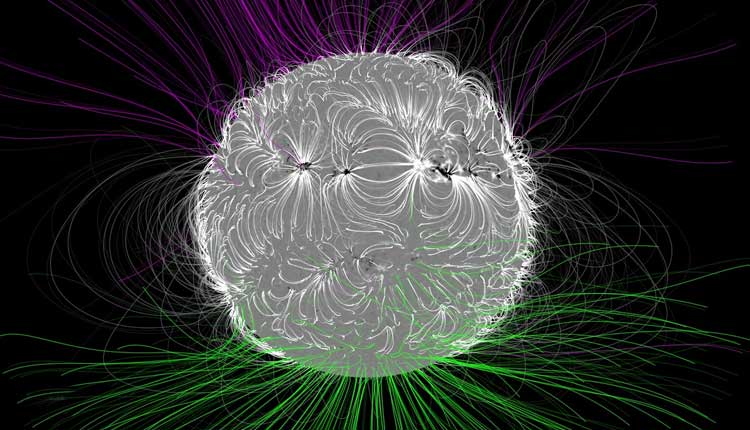New Delhi: Using information from the Kodaikanal Tower Tunnel Telescope, researchers at the Indian Institute of Astrophysics (IIA) have developed a novel way to investigate the Sun’s magnetic field.
By examining the magnetic field at various solar atmospheric layers, this technique sheds light on solar phenomena such as the dynamics of the solar wind and the “coronal heating problem”.
The layers that make up the solar atmosphere are connected by magnetic fields, which move mass and energy from the inner to the outer layers. It is necessary to take accurate magnetic field measurements at various heights in order to comprehend these processes. The observational method known as simultaneous multi-line spectropolarimetry has shown promise in elucidating the chromospheric fluctuations during solar flares and the magnetic structure of sunspots.
A dynamic sunspot region with intricate features was the subject of a study conducted by IIA astronomers. By means of concurrent observations in the Calcium II 8662 Å and Hydrogen-alpha (Hα) spectral lines, the group examined the stratification of the magnetic field at different elevations inside the solar atmosphere.
The data used in this study were provided by the Kodaikanal Solar Observatory, which is most known for having discovered the Evershed Effect in 1909. The results of the study showed that the Hα line is an essential probe of the chromospheric magnetic field, especially in the case of solar flares and other abrupt temperature swings.
As a result, the Hα line samples higher air layers than the Ca II 8662 Å line, which consistently infers stronger magnetic fields. At the photosphere, the magnetic field strength was measured to be 2000 G, and at the chromosphere, it was 500 G.
“Our study highlights the Hα line’s effectiveness in probing the chromospheric magnetic field, especially in flaring regions,” said Harsh Mathur, the lead author.
The study, which has been accepted for publication in The Astrophysical Journal, highlights the potential for a deeper understanding of the Sun’s magnetic field stratification that may be obtained with cutting-edge observatories like the Daniel K. Inouye Solar Telescope (DKIST) and the upcoming European Solar Telescope (EST).
(IANS)
















